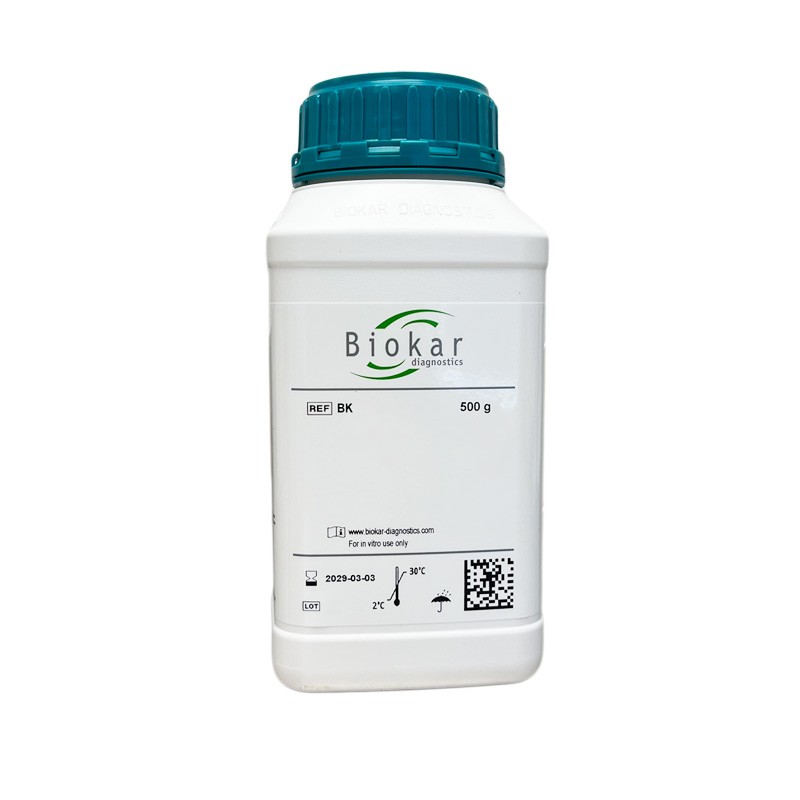- +Products
- +Allergen testing
- +Culture Media - reagents and reference material
- +Environmental testing solutions
- +Laboratory Consumables
- +Laboratory equipment
- +Microbiology equipment
- +Neogen® Food Safety Solutions
- +Temperature & Humidity Monitoring
- Services
- Support
- News
- +About Us
- Contact

Kligler Iron Agar
Kligler Iron Agar is used for the identification of enterobacteria by the rapid detection of lactose and glucose fermentation (with or without gas production), as well as the production of hydrogen sulfide.
Available as dehydrated medium : 500 g bottle
In compliance with regulatory requirements, a USDA permit (VS 16-3) is mandatory for shipments from Canada to the USA due to the inclusion of peptone, an animal byproduct.
The fermentations of lactose and glucose, used to differentiate species of enterobacteria, result in acidification which makes phenol red (pH indicator) turn yellow.
Microorganisms not fermenting lactose (Salmonella or Shigella) initially product a yellow slant due to the acidification resulting from glucose present in small quantities. When the glucose has been exhausted in the aerobic portion of the slant, the reaction becomes basic by oxidation of the acids produced, resulting in the phenomenon of a red color on the surface of the medium. This color does not appear in depth in the butt, where the color remains yellow.
Bacteria fermenting lactose and glucose make the slant and the butt turn yellow because of the production of large quantities of acid. This is sufficient to maintain an acid pH on the surface. Microorganisms which ferment neither of these two sugars do not change the color of the medium. The production of H2S is revealed in the base of the medium by the appearance of black iron sulfide, due to the reduction of thiosulfate in the presence of ferric citrate.
The production of gas (H2, CO2) resulting from sugar fermentations is shown by the appearance of gas bubbles or by a fragmentation of the agar.



